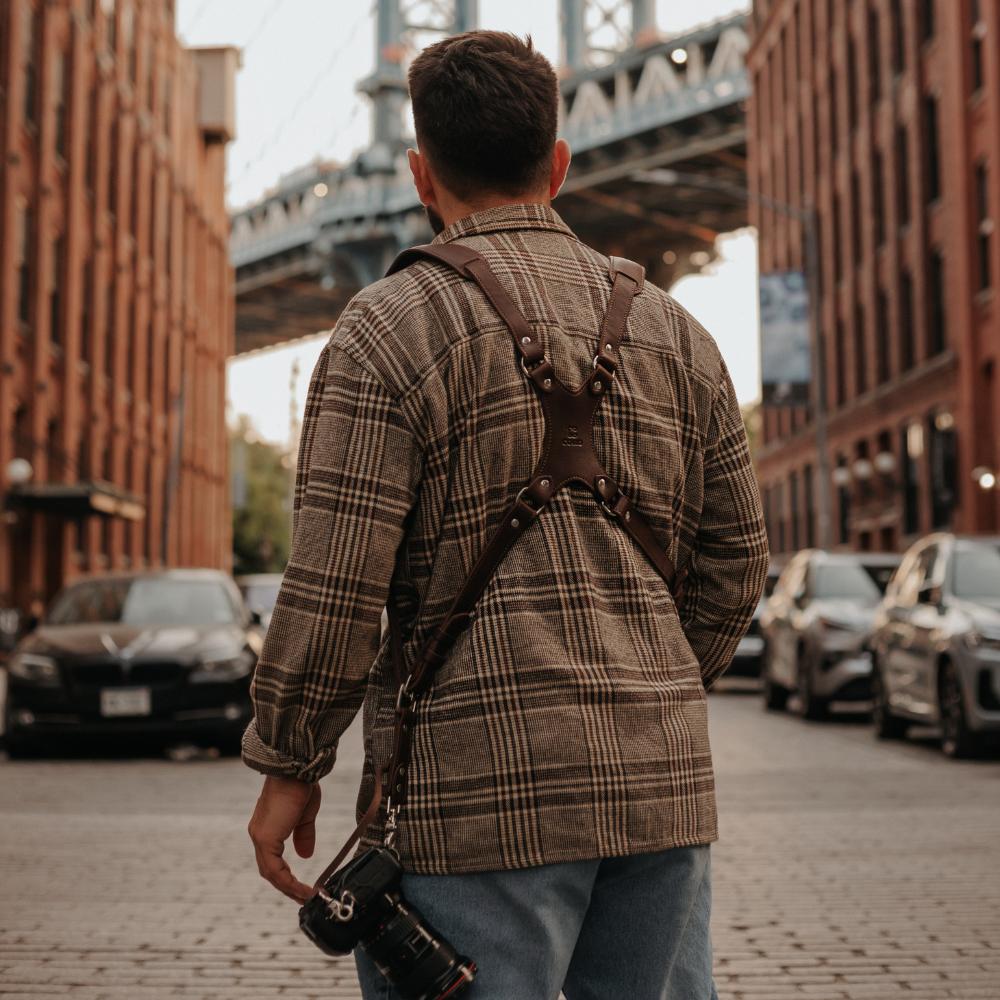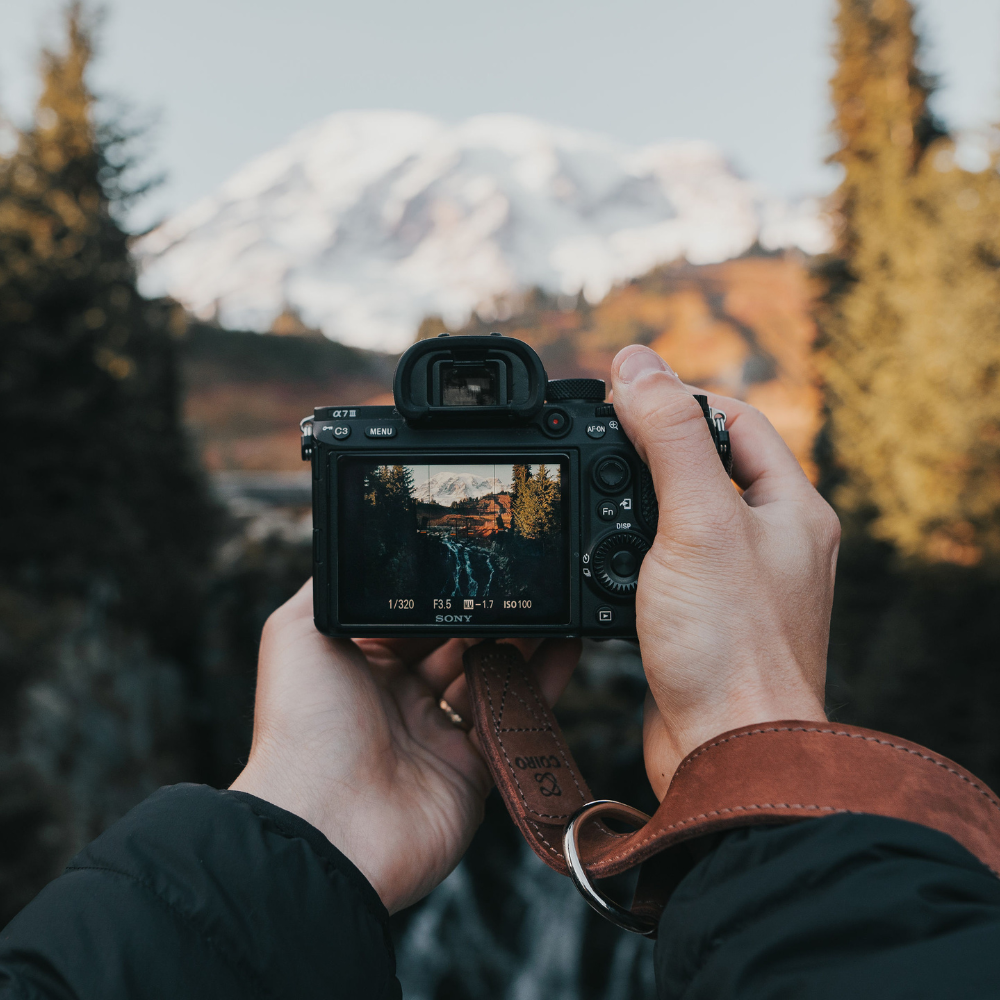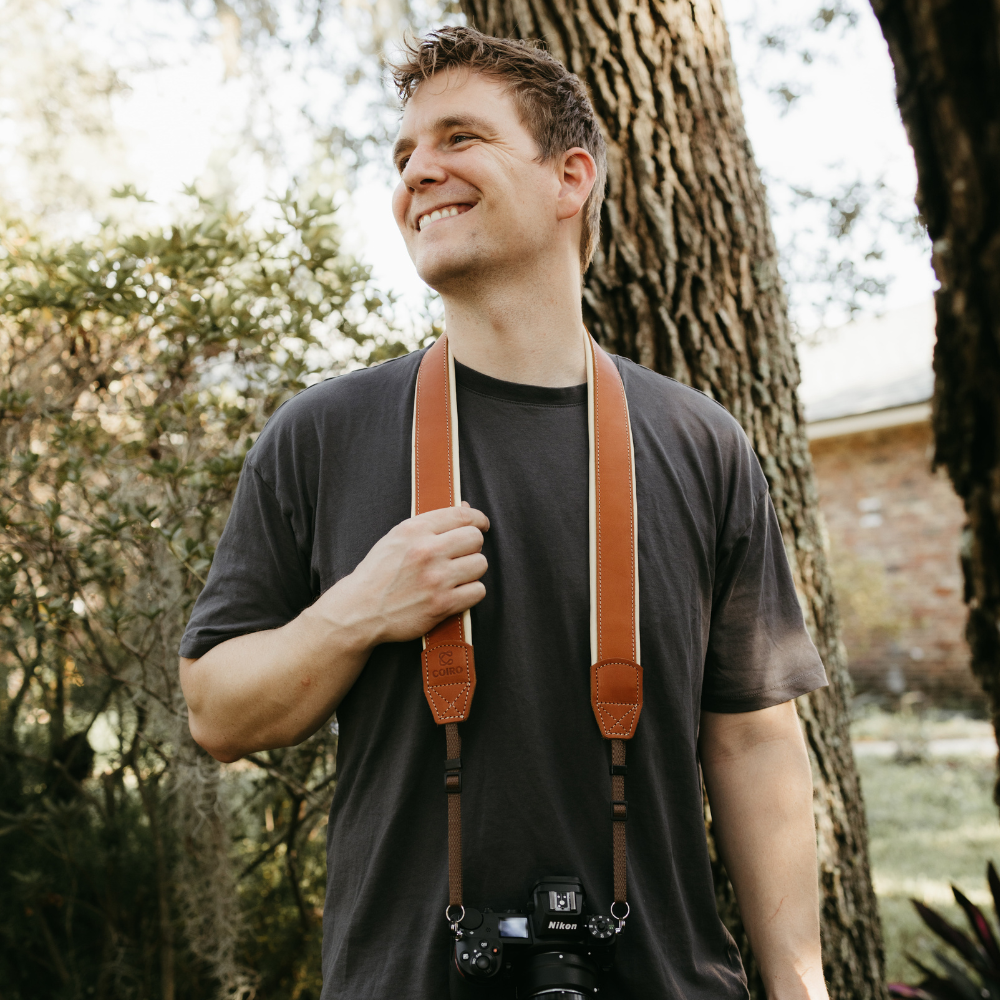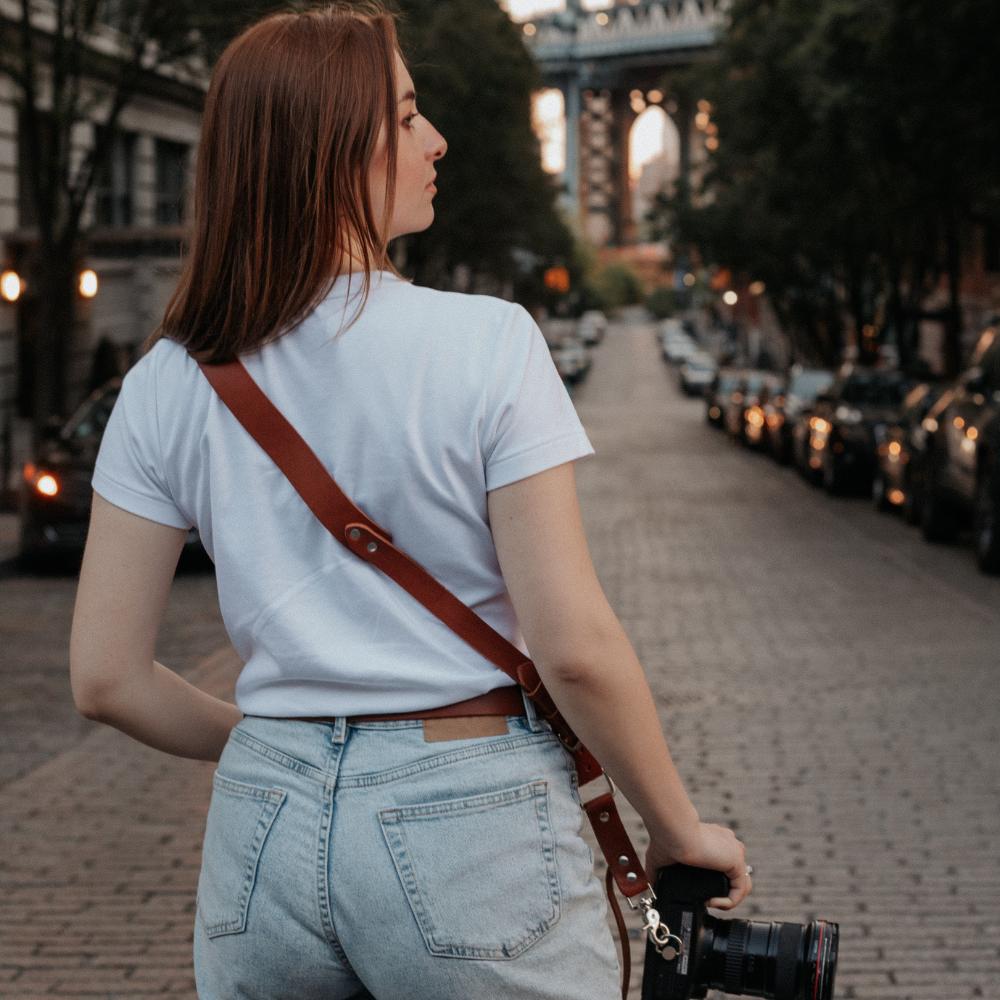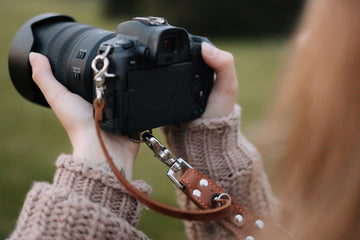If you look at a photographer from the outside, especially one who works at weddings, events or on trips, many underestimate the issue of convenience. But a professional camera strap can be almost more important than a lens. Now, many have probably managed to surprise. The fact is that anyone who has ever spent the whole day shooting with a camera on their neck or shoulder understands perfectly well that convenience and reliability of fastening are not trifles at all. This is primarily a question of comfort, safety of equipment and, of course, the final quality of the pictures. Therefore, below we will examine in more detail the features of this very important accessory and consider the criteria that should be taken into account when choosing, which will allow you to choose the best option for yourself without overpaying.
Why do you need a strap at all?
Many people take pictures for years with a complete strap from the manufacturer and do not even think that it could be better. Yes, in some cases this is really enough. Although up to a certain point. Standard straps have some nuances:
-
inconvenient for long-term shooting, as they press on the neck or rub;
-
not suitable for wearing over the shoulder;
-
looks like free advertising of the brand, which is not always appropriate.
Professionals treat this differently, because every little thing should work for the result. And the strap is no exception.
What types of straps are there?
Before buying a professional camera strap, you should initially decide on the format, since straps, like lenses, have their own types. Each is suitable for different tasks, shooting style and even body structure.
Neck straps
This is a time-tested classic, familiar to most. In this case, the camera hangs on the chest and is instantly raised into the hands when needed. This method is convenient for shooting "on the fly", especially if the equipment used is lightweight. This is a familiar, working option, but with one caveat. In this case, all the pressure goes to the neck. After a couple of hours of shooting, even a light camera turns into a source of discomfort.
That is why experienced professionals rarely wear a camera just around the neck. More and more often, they prefer options over the shoulder or diagonally. Thanks to this, the load is redistributed, and it becomes easier to withstand long sessions. The width and softness of the strap play an important role here. If you choose a narrow and hard strap, most likely it will rub. But a wide one with a soft lining, on the contrary, can become a good ally during shooting.
Shoulder straps
Such a professional camera strap is one of the most convenient options for those who work actively and move a lot. In this way, the camera is attached over the shoulder, slides along the strap on a special latch and is easily lifted into the hand in one movement. This is especially useful when a heavy DSLR with a lens is hanging on the shoulder. Due to this, the weight is evenly distributed, and the back does not get tired so quickly. Such straps are used, for example, by photographers at weddings, events, as well as travel photographers who need to react as quickly as possible to a good shot.
But this case is not without its drawbacks. The downside is that if you have a backpack on the same shoulder, using such a strap may not be very convenient. In addition, unlike a simple neck strap, a sling is not as quick to put on and take off. You will have to spend a little time to put it on. But for many, this is the best balance between comfort, access to the camera and safety, so this option is also worth taking a closer look.
Wrist Straps
This version of professional camera straps is usually chosen by street photographers, bloggers or just those who travel light. It goes especially well with compact cameras, such as the Fujifilm X100 or Ricoh GR. This type of strap is worn on the wrist and protects against accidental slipping of the camera from the hand. In this case, there is no unnecessary design, everything is minimalistic and as simple as possible. This solution is almost weightless, and it does not interfere with clothing. Agree, convenience is at its best.
But there is a downside to the coin, which is also worth mentioning. During long-term shooting, the entire load falls on the wrist. With heavy equipment, such a strap is definitely not suitable and you need to take a closer look at more appropriate options. Therefore, you can come to the conclusion that it is more of an addition than a basis. But for quick photos on the street or on the road, it is an excellent solution, which is also desirable for a photographer to have in the home arsenal.
What are camera straps made of?
The material of a camera strap is not just a matter of appearance. It determines how comfortable it will be for you to shoot, how long the accessory will last, and how it will perform in a variety of operating conditions. At first glance, it may seem that all straps are the same, and that they differ from each other primarily in design and color, and, of course, in price. But once you try on a couple of different ones, you realize that it is not only about shape, but also about texture, flexibility, and how it feels on the skin. Professional photographers have long understood this and choose not just “to hold”, but “to work”. And here are the materials most often encountered in practice:
-
Nylon / polyester. Such accessories are durable, lightweight, inexpensive. But they can slip or rub, which is important to take into account.
-
Leather. An excellent choice for a professional. It is beautiful, reliable, durable. A little heavier, but looks premium and expensive. In addition, such accessories will retain their presentable appearance for a long time.
-
Paracord, fabric, rope. In this case, it is most likely exotic, often handmade. Such belts are quite unusual, but require careful selection regarding convenience issues.
Often, professionals choose hybrid universal camera straps. For example, a leather strap with nylon inserts or a soft neoprene lining not only looks stylish, but is also easy to use.
How to choose the best model?
In order for you to have only positive emotions from the purchase, we recommend paying attention to the following points:
-
Reliability of fasteners. Metal carabiners, anchors, reliable loops - all this protects the camera from falling.
-
Comfort. A soft, wide, correctly fitting strap allows you to shoot all day without fatigue.
-
Quick access. The camera should always be at hand. This is especially important in a report.
-
Adjustability. To suit your clothes, to suit the weather, to suit your shooting style — it’s convenient when you can adjust the length.
-
Weight. A strap that’s too heavy is, first of all, an additional burden, especially when traveling.
-
Appearance. Yes, this is not the most important thing. But if you’re shooting a wedding or a business photo shoot, the appearance of the strap also matters. At least from an image point of view, since the impression of a professional is made up of little things, and not just those that directly relate to the quality of the work.
Is it possible to save money?
Yes, you can. But be smart. You shouldn’t buy the cheapest strap from AliExpress without reviews. One awkward moment, and an expensive camera can end up on the floor. But a branded strap for several hundred dollars is not always a necessity. There are a lot of great options in the mid-price segment that are reliable, comfortable, look nice, and last for years. You can also pay attention to handmade straps. They are not always more expensive, but they often look more impressive and are made with love.
Let's sum it up
It is worth noting that when it comes to choosing the best model, everything is very individual. One photographer uses a system with two straps, while another wears the camera in his hand on his wrist. Someone chooses functionality, someone minimalism and style. Everything depends primarily on the tasks and habits. Therefore, there is no clear answer to the question "which strap is the best?" The best strap is, first of all, the one that suits you.
It is worth noting that professionals do not use the first strap they come across. They search, test, compare. A good strap is not just convenience. It is your insurance against losing your camera and an assistant in shooting. Therefore, you should not save on what keeps your equipment safe, which, by the way, is not cheap at all. It is better to spend a little more and be calm than to regret it later. Therefore, we recommend that you carefully consider your choice. Try it on, read reviews, ask other photographers. And let the camera always be at hand - conveniently, reliably and in your own way.
